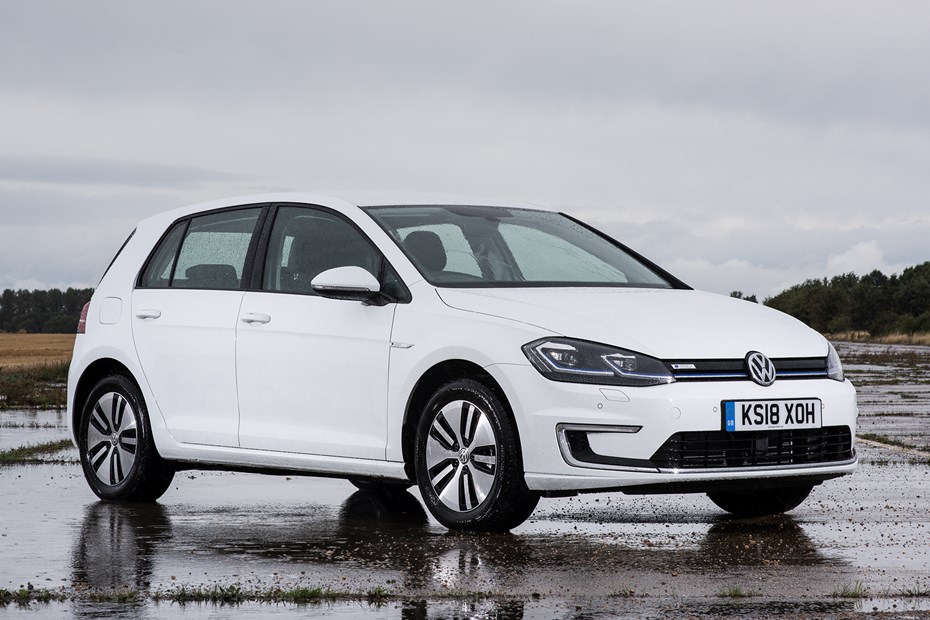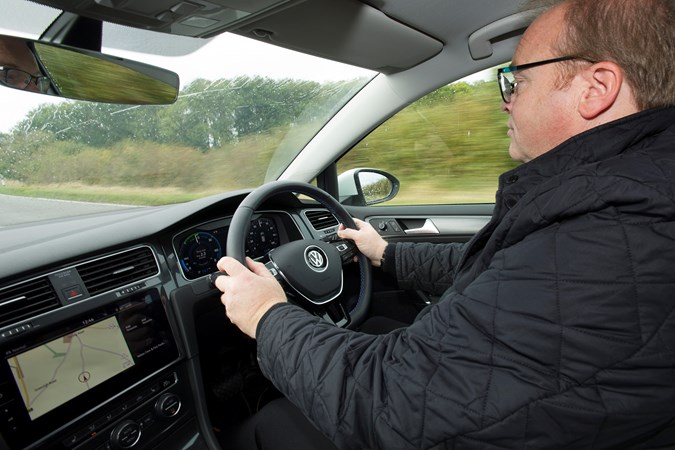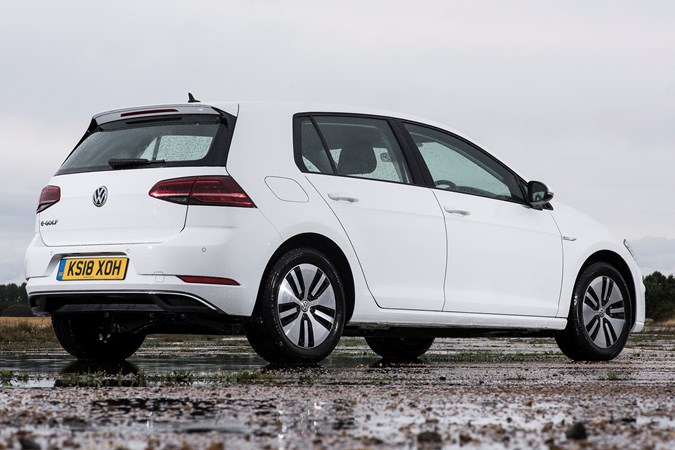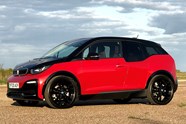
Volkswagen e-Golf Hatchback (2014-2020) review

At a glance
| Price new | £31,075 - £31,680 |
|---|---|
| Used prices | £4,321 - £11,225 |
| Road tax cost | £0 |
| Insurance group | 19 - 26 |
Get an insurance quote with

|
|
| Fuel economy | 4 miles/kWh |
| Miles per pound | 6.3 - 11.8 |
| View full specs for a specific version | |
Available fuel types
Fully electric
Pros & cons
- A great driving experience – comfortable, refined and quick
- High-quality interior, decent room for driver, passenger and luggage
- As an introduction to EV driving, it doesn't get much better than this
- Limited range on a full charge – 120 miles maximum
- Lacking a little bit of design flair compared with rivals
- They won't be replacing it when the Golf goes out of production
Volkswagen e-Golf Hatchback (14-20) rivals
Overview
Is the Volkswagen e-Golf any good?
Volkswagen‘s aim for the e-Golf was to democratise electric car ownership. It sought to do this by normalising the experience and turn Electric Vehicle (EV) ownership into a pleasant, fuss-free experience by doing everything as well as any other Mk7 Volkswagen Golf. As such, it looked like a standard Golf and drove like one, too.
That’s no bad thing. For those who are sitting on the fence about owning a used electric car, the idea of this familiarity will be very reassuring. Other manufacturers make a positive virtue of their EVs being a bit different – which is fine when you’re encouraging early adopters into the fold.
The e-Golf has some work to do, though. It’s up against the Nissan Leaf, BMW i3 and Hyundai Kona Electric, which all claim a longer range, and in the case of the first two, been around long enough to pick up an enthusiastic following.
What’s it like inside?
The Volkswagen e-Golf is just like any other petrol, diesel or hybrid version of this generation inside. So, you get a high-quality colour LCD display instead of traditional instruments and high-quality switchgear, that’s intuitive and simple-to-use.
The standard model came with a 9.2-inch touchscreen that’s good to use and majors a super-sensitive display and the dubious delights of gesture control and the option of a vast suite of apps. A lack of physical buttons hampers its usability, though, although cheaper systems, with a pair of rotary knobs, are much easier to use on the move.
Likewise the quality of materials used elsewhere in the cabin are exemplary, and in some areas trump the current eighth-generation model. Soft touch plastics dominate, with plainer finishes found only where the hand is less likely to stray – otherwise every other contact point feels reassuringly more expensive than the car’s list price would suggest.

What’s it like to drive?
It’s very, very good, and although it’s an EV, it’s also a Volkswagen Golf. So if you have experience of both, you’re going to have a very good idea of how it’s going to drive without even turning a wheel. Once you’ve fired it up, and adjusted to the silence, it’s a case of pushing the transmission shifter into drive and pushing on the accelerator.
There are two transmission modes, D and B. The latter mode is good as you get a strong regenerative effect when you lift the throttle – a bit like heavy engine braking in a petrol car. And as for acceleration, it’s smooth and rapid, and although Volkswagen quoted a 9.3-second 0-62mph time and a top speed of 93mph for our 136hp version, it feels a lot quicker than that.
There are five driving models in total, with Eco being reserved for those who are running out of charge. I’ll go into more detail on the effectiveness of that in a later update.
Comfort
The e-Golf handles like a standard Golf, although in tighter bends, you’re always aware of the additional weight of the battery pack. But it grips well and handles tidily, and does pretty much what you’d expect it to.
Where the e-Golf really excels is in terms of its ride quality. Maybe it’s the additional weight of its power pack that does it, but the way that it flattens out the worst ruts, lumps and potholes is shockingly effective. It feels so impressively poised and level that you’ll find yourself asking why you’d want to spend more.
It’s one of the most soothing cars to drive in this class. But as well as that, it has to be said that it also drives rather better than Keith WR Jones’s Nissan Leaf, which isn’t exactly shabby itself. But that’s because the Volkswagen is so much more refined and mature. So, it’s a good car to drive, and one that we can heartily recommend from a comfort and handling perspective. We would mention its 120-mile real-world driving range, though.
What models and trims are available?
There was but one version available, and although the e-Golf was expensive new and still commands high prices used, you benefit from cheaper electric car running costs and free entry to ULEZ zones to help ease the pain. It’s similarly priced to the swankier BMW i3, but the Nissan Leaf and Renault Zoe – especially – are less expensive used.
Standard equipment includes:
- 16-inch alloy wheels
- Dual-zone climate control
- Automatic LED lights
- Cruise control
- Parking sensors
- 9.2-inch Infotainment with sat-nav
- Smartphone mirroring
What else should I know?
What does it cost to charge?
During six months of driving, and charging it on a home Pod Point (3.7kWh), and typically on an overnight tarriff at 10p per kWh, a typical 40-mile commute costs around 80p per day. At a more typical 14p per kWh rate for domestic electricity, a full recharge is about £3.00.
What is the range of the Volkswagen e-Golf?
After running an e-Golf for six months, we can confidently say that if you drive it in normal mode in decent weather and mixed traffic, you’ll return between 110-120 miles on a full charge. This will fall to 90-110 when the weather turns colder, or you’re heavy-footed – or doing lots of motorway driving.
The battery indicator suggests that a charge is good for an indicated 180 miles on a warm day, but it mis-reports unless you’re in Eco+ and driving at a snail’s pace. In winter, that indicated 180 (121 real-world miles) reduces to 160 (100 real-world miles).
Considering that the Nissan Leaf will get nearer 160 miles and its battery indicator is generally accurate, that’s the only disappointment we have with the e-Golf. Finally, it’s also worth considering the similarly-priced Hyundai Kona Electric, which in 64kWh form can easily beat 250 miles – the Golf’s lack of range really is an issue in that context.
Click here to read more about how the Volkswagene-Golf perfoms over six months of ownership. Click here to skip straight to our final verdict









